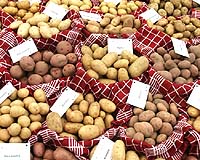 |
Oak Ridge TN (SPX) Jun 04, 2010 Carbon dioxide emissions from agricultural activity in the United States can now be tracked with unprecedented resolution because of a method developed at Oak Ridge National Laboratory. A team led by Tristram West uses satellite remote sensing, computational resources and high-resolution national inventory datasets to pinpoint agricultural-based carbon emissions nationwide. The method, outlined in the journal Ecological Applications (http://www.esajournals.org/doi/full/10.1890/08-2352.1), provides a link between ground-based estimates and atmospheric measurements for any given agricultural point in the nation. "This is a significant step toward compiling datasets and establishing a method useful for carbon accounting purposes," said West, a member of ORNL's Environmental Sciences Division. "Until now, we have done project-level reporting and national-level reporting as two independent exercises," West said. "The first was for carbon credits while the second was for international reporting to the United Nations." West noted that, with the current system, emissions from economic sectors are reported nationally as required under the U.N. Framework Convention on Climate Change. Project-level emissions are monitored on a case-by-case basis under independent projects or regional programs. Doing both - project- and national-level reporting - in a consistent manner will become increasingly important as the U.S. and other countries move forward with climate agreements and legislation to reduce carbon dioxide emissions, according to West. "If the U.S. enters into national or international agreements on emissions reductions, a consistent framework for monitoring and reporting net carbon dioxide emissions from the project to national levels will prove more effective and provide more accurate and consistent reporting than independent reporting processes," West said. The ORNL method uses land cover data derived from NASA satellites to refine geospatial cropland carbon fluxes nationwide. Meanwhile, the Department of Agriculture's cropland data layer enables field-scale delineation of specific crops and allows for refined estimates of carbon fluxes. Ultimately, this effort provides estimates of net ecosystem exchange of carbon for any given agricultural point in the U.S. This information about carbon flux based on crop, soil and management practices gives a measure of the total vertical carbon flux, including fossil fuel emissions occurring on site. The research effort also provides estimates of net ecosystem carbon balance, which includes all carbon sources and sinks associated with crop production in a defined area. "This means that upstream emissions from fertilizer production, for example, are accounted for in the same place where the crop is produced," West said. "This method allows for an estimate of the total impact of changing cropland management on net CO2 emissions." Cropland management has proved to be an important consideration. For example, researchers reported that reduced tillage practices from 1990 to 2004 resulted in a net emissions reduction of 8.8 million metric tons of CO2 from burning fossil fuels in the U.S. West notes that this version of the carbon accounting framework can be improved by anticipated improvements in annual crop species-specific biomass and crop residue production. Co-authors from ORNL are Craig Brandt, Latha Baskaran, Varaprasad Bandaru, Bai Yang, Gregg Marland and Wilfred Post. Other authors are from the University of Tennessee, the Department of Agriculture and Kansas State University. This research was funded in part by the NASA Earth Sciences Division and the Department of Energy Biological and Environmental Research Program's Consortium for Carbon Sequestration in Terrestrial Ecosystems. UT-Battelle manages ORNL for the DOE's Office of Science.
Share This Article With Planet Earth
Related Links ORNL Environmental Sciences Division Farming Today - Suppliers and Technology
 To Double Spud Production, Just Add A Little Spit
To Double Spud Production, Just Add A Little SpitIthaca NY (SPX) Jun 03, 2010 When it comes to potentially doubling the output of the world's fourth largest food crop, the secret may be in the spit. Researchers at Cornell University, as well as the University of Goettingen and National University of Colombia, have discovered that when a major South American pest infests potato tubers, the plant produces bigger spuds. The secret to this increased yield, they write in ... read more |
|
| The content herein, unless otherwise known to be public domain, are Copyright 1995-2010 - SpaceDaily. AFP and UPI Wire Stories are copyright Agence France-Presse and United Press International. ESA Portal Reports are copyright European Space Agency. All NASA sourced material is public domain. Additional copyrights may apply in whole or part to other bona fide parties. Advertising does not imply endorsement,agreement or approval of any opinions, statements or information provided by SpaceDaily on any Web page published or hosted by SpaceDaily. Privacy Statement |